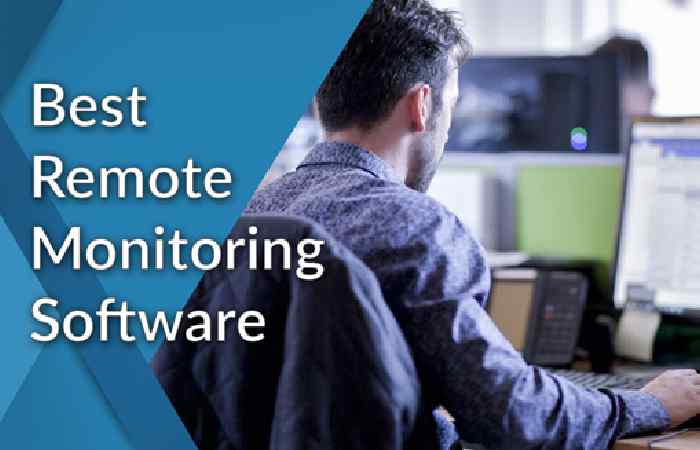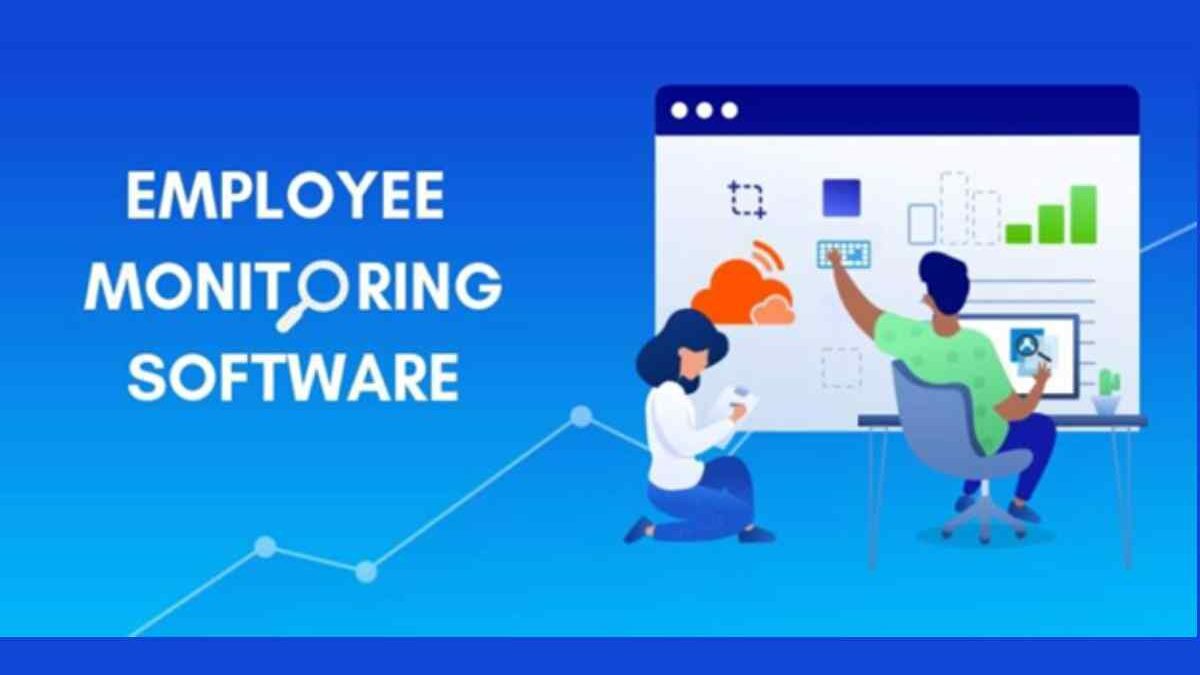Table of Contents
Introduction:
In today’s rapidly evolving business landscape, where remote work is increasingly prevalent, ensuring productivity, security, and compliance has become paramount. Enter Employee Monitoring Software, a powerful tool that empowers employers to effectively manage their workforce while respecting privacy and legal boundaries. In this comprehensive guide, we delve into the world of Employee Monitoring Software,
exploring its features, benefits, ethical considerations, and future trends.
Employee Monitoring Software Overview:
Employee Monitoring Software stands as a pivotal solution in modern businesses, providing insights into employee activities to optimize performance and mitigate risks. It acts as a digital eye, offering real-time monitoring of tasks, screen activities, and internet usage. This tool plays a crucial role in enhancing productivity, safeguarding sensitive data, and ensuring regulatory compliance within organizations.
Key Features:
Employee Monitoring Software encompasses a range of features designed to streamline management processes and facilitate informed decision-making. From time tracking and screen monitoring to activity logging and detailed reporting, these functionalities offer unparalleled visibility into employee workflows. By harnessing these features, businesses can identify inefficiencies, allocate resources effectively, and foster a culture of accountability.
Employee Monitoring Software Benefits:
The adoption of Employee Monitoring Software yields myriad benefits for both employers and employees. For employers, it translates into heightened productivity, reduced operational costs, and enhanced remote work management capabilities. Conversely, employees benefit from improved task prioritization, streamlined communication channels, and a clearer understanding of performance expectations. By fostering transparency and accountability, Employee Monitoring Software cultivates a conducive work environment conducive to growth and success.
Compliance and Privacy:
Addressing concerns surrounding privacy and compliance is integral to the ethical implementation of Employee Monitoring Software. Organizations must prioritize data protection and adhere to relevant regulations such as GDPR and CCPA. By implementing robust data encryption protocols and obtaining explicit consent from employees, businesses can uphold ethical standards while leveraging the insights provided by Employee Monitoring Software responsibly.
Employee Monitoring Software Use Cases:
Real-world examples illustrate the versatility and efficacy of Employee Monitoring Software across diverse industries. From remote work management in technology firms to project tracking in construction companies, the applications are manifold. By tailoring the software to specific business needs, organizations can optimize resource allocation, streamline operations, and drive sustainable growth.
Choosing the Right Software:
Selecting the most suitable Employee Monitoring Software entails careful consideration of factors such as scalability, integrations, and user-friendliness. Businesses must assess their unique requirements and opt for a solution that aligns with their objectives and budget constraints. By conducting thorough research and seeking recommendations from industry peers, organizations can make informed decisions that maximize ROI and drive organizational efficiency.
Implementation:
Successful implementation of Employee Monitoring Software hinges on effective communication and stakeholder engagement. Organizations must transparently communicate the rationale behind the adoption of such tools and address any concerns raised by employees regarding privacy and autonomy. By fostering a culture of trust and collaboration, businesses can facilitate a seamless transition to Employee Monitoring Software and harness its full potential.
Exploring Remote Monitoring Software Solutions

Exploring remote monitoring software solutions unveils a realm of possibilities for businesses seeking to enhance their operational efficiency and adaptability in today’s dynamic work landscape. These solutions offer a comprehensive suite of tools designed to monitor and manage various aspects of remote work, including employee activities, performance metrics, and compliance with organizational policies. By harnessing the capabilities of remote monitoring software, businesses can gain valuable insights into remote team dynamics, optimize resource allocation, and ensure seamless communication and collaboration. Whether tracking project progress, monitoring employee productivity, or safeguarding data security, remote monitoring software empowers organizations to navigate the complexities of remote work with confidence and precision.
Trends and Future Outlook:
The landscape of Employee Monitoring Software continues to evolve rapidly, driven by technological advancements and shifting work paradigms. Current trends such as AI-powered analytics, behavioral monitoring, and integration with collaboration tools are poised to reshape the industry. Looking ahead, we anticipate further innovations that cater to the dynamic needs of modern workplaces, facilitating greater efficiency, agility, and adaptability.
Conclusion:
Employee Monitoring Software represents a paradigm shift in how businesses manage and optimize their workforce. By embracing this transformative tool, organizations can unlock untapped potential, drive operational excellence, and navigate the complexities of the digital age with confidence. With a steadfast commitment to ethical principles and a forward-thinking approach, Employee Monitoring Software emerges as a catalyst for sustainable growth and competitive advantage in an ever-evolving business landscape.
FAQs,
What is Employee Monitoring Software, and how does it work?
Employee Monitoring Software is a digital tool designed to track and monitor employee activities within an organization. It operates by collecting data on various metrics such as time spent on tasks, screen activities, internet usage, and keystrokes. This information provides insights into employee productivity, behavior patterns, and compliance with company policies.
2. How does Employee Monitoring Software benefit employers?
Employee Monitoring Software offers several benefits to employers, including:
- Enhanced productivity through better resource allocation and task management.
- Improved security by identifying potential security threats and unauthorized activities.
- Compliance with regulatory requirements by ensuring adherence to data protection laws and company policies.
- Remote work management by providing visibility into off-site employee activities and performance.
3. Are there any benefits for employees in using Employee Monitoring Software?
While some employees may initially perceive Employee Monitoring Software as intrusive, it can also offer benefits such as:
- Clearer performance expectations and feedback from managers.
- Opportunities for skill development and performance improvement.
- Transparency regarding workload allocation and task priorities.
- Protection against unfair accusations or disputes through accurate activity logging.
4. How does Employee Monitoring Software address privacy concerns?
Employee Monitoring Software prioritizes privacy by implementing robust data encryption protocols, anonymizing sensitive information, and obtaining explicit consent from employees. Additionally, organizations should establish clear policies regarding data usage and access rights to ensure compliance with privacy regulations.
5. Can Employee Monitoring Software be customized to suit specific business needs?
Yes, Employee Monitoring Software is highly customizable, allowing organizations to tailor it to their unique requirements. Businesses can choose from a range of features and functionalities, such as time tracking, screen monitoring, activity logging, and reporting, based on their priorities and objectives.
- What should organizations consider when selecting Employee Monitoring Software? When
selecting Employee Monitoring Software, organizations should consider factors such as:
- Scalability: Ability to accommodate future growth and changes in organizational structure.
- Integrations: Compatibility with existing software systems and tools used within the organization.
- User-friendliness: Ease of implementation and intuitive interface for both administrators and end-users.
- Cost-effectiveness: Affordability and return on investment in terms of improved productivity and operational efficiency.
7. How can organizations ensure successful implementation of Employee Monitoring Software?
Successful implementation of Employee Monitoring Software requires clear communication, stakeholder engagement, and adherence to ethical principles. Organizations should involve employees in the decision-making process, provide adequate training and support, and establish guidelines for ethical usage to foster a culture of trust and accountability.
8. What are the emerging trends in the Employee Monitoring Software landscape?
Emerging trends in Employee Monitoring Software include:
- AI-powered analytics for predictive insights and behavior analysis.
- Integration with collaboration tools and project management platforms for seamless workflow management.
- Focus on employee well-being and work-life balance through features such as productivity coaching and time management tools.
- Enhanced data security measures to protect against cyber threats and data breaches.
9. How can organizations ensure ethical use of Employee Monitoring Software?
Organizations can ensure ethical use of Employee Monitoring Software by:
- Establishing clear policies and guidelines regarding data usage, access rights, and employee privacy.
- Obtaining explicit consent from employees before implementing monitoring tools and providing transparency regarding the purpose and scope of monitoring.
- Conducting regular audits and assessments to ensure compliance with privacy regulations and ethical standards.
- Encouraging open communication and feedback from employees regarding their concerns and experiences with the software.
10. What is the future outlook for Employee Monitoring Software?
The future outlook for Employee Monitoring Software is characterized by continuous innovation and adaptation to changing work environments. As remote work becomes more prevalent and digital transformation accelerates, Employee Monitoring Software will play an increasingly critical role in optimizing workforce management, ensuring compliance, and driving organizational success.
Top of Form
Bottom of Form

